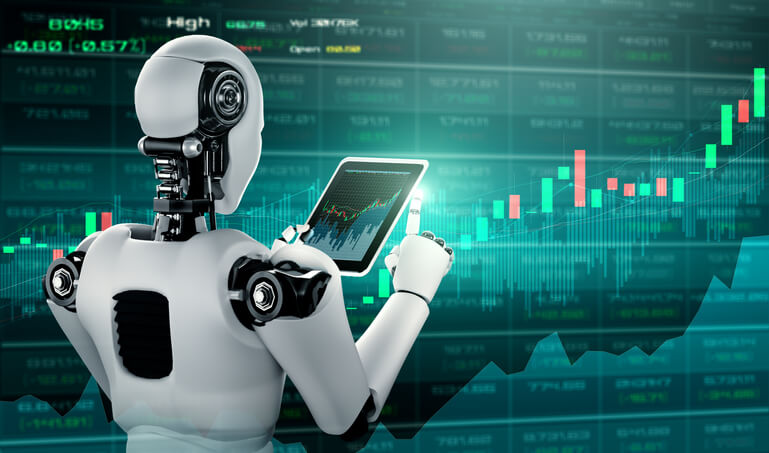Content
He added the exchange, which allows people to buy bitcoin and other cryptocurrencies, had seen an increase in customers every month of this year. However, those were both far lower than bitcoin’s ultimate high of more than $20,000 reached two years’ ago, at the height of bitcoin’s boom. Halvings take place every time 210,000 blocks are mined, occurring roughly every four years. ‘Bitcoin is now seen by many people in the same way, because new bitcoins are created slowly and there is maximum limit of 21million bitcoins. There are reports that this has proved hard for some people. A time of market stress could lead to people being locked in and unable to trade.
The mathematical code underpinning the cryptocurrency means that only 21 million bitcoins can ever be produced and no amount of quantitative easing can artificially inflate this. Turning to the wider impact of the halving, a diminished reward for mining bitcoin will reduce the revenue that miners can generate from adding new transactions to the blockchain. After the upcoming halving, an increase in price makes perfect sense due to supply and demand. As the supply of Bitcoins is slowly reaching its ultimate limit of 21 million, it becomes more and more valuable. This, in addition to the increased popularity and application of cryptocurrency on a worldwide level means that the demand will only continue to increase and raise the price. The more the price of Bitcoin rises, more miners will compete for the reward.
At face value, a Halving might sound like a negative event for Bitcoin miners; however, for traders and investors, it can come with many positives. The purpose of this article is to explore the potential impact of the next Halving event, . We will also look at how you might trade it and even ways to manage and mitigate your risk effectively. Let’s first understand what a Halving is and what can we expect in terms of the event’s impact on the price of Bitcoin in 2020. Bitcoin halving is essential for a trader because it minimizes the total number of Bitcoins that the network generates. And this is beneficial because prices can rise if Bitcoin demand remained strong.
The halving timeline has a halving event occurring approximately every 4 years. After the May 2020 Bitcoin halving event, the next predicted Bitcoin halving is due to take place in May 2024. I’m a bitcoin trader and the time I’m writing this blog I can’t find a single review about many bitcoin trading signal services and companies.
Markets
“Mainstream financial institutions have long been fearful of cryptocurrencies, with many still seeing the likes of bitcoin as competition, not opportunity. But, financial giants in the way of Barclays in the UK, and Goldman Sachs, have pushed forward with their respective cryptocurrency projects,” says Swanepoel. The digitalisation of our lives is accelerating at a faster pace than ever before. We’re in an exciting new era driven by technology,” says Nigel Green, CEO of independent financial advisor deVere Group. There will only ever be a finite amount of Bitcoins (Photo by Chesnot/Getty Images)The digital cryptocurrency Bitcoin has just experienced a rare event known as ‘halving’ where the value of unlocking a Bitcoin drops. The deVere CEO adds that in these unusual times, central banks have increased monetary supply and this will further drive prices of cryptocurrencies such as Bitcoin. “Previous Bitcoin halving events have prompted impressive price climbs.
As supply edges closer to the finite number of Bitcoin, demand rises. Each halving serves as a reminder that the supply of Bitcoin is running out. It’s expected, though, that the last Bitcoin will be mined sometime in the year 2140. It may sound like a very simple concept to many of you but to the cryptocurrency community is an event of huge importance that will inevitably affect the value of the coin. What halving means is the reduction of the Bitcoin mining reward issued by half. The reason for Bitcoin price increases is the principle of supply and demand.
The bitcoin halving is unlikely to impact on this,” says Sushil Kuner, principal associate, Gowling WLG. Bitcoin’s historic halving event on Monday underscores that the “long-term future of cryptocurrencies is secure”, says the CEO and founder of one of the world’s largest independent financial advisory organisations. Finally, we cannot ignore the impact of Covid-19 and the massive effect it has had on financial markets.
Whether a risk to growth or a boon, the coronavirus outbreak has undoubtedly been an unexpected factor in future adoption rates. And for many, it is only going to help the cryptocurrency grow.
Learn About The Bitcoin Halving
The first took place in November, 2012, and the second in July 2016. The digital currency relies on what are known as “miners”, who run software that races to solve complex maths puzzles in return for Bitcoins. Miners will need to operate as efficiently as possible and there will therefore be a demand for new equipment that can deliver more hashes per second, while consuming less energy and reducing overheads. Recent research by SEBA highlighted this by comparing bitcoin to gold, which has also seen substantial increases in its value in previous economic crises. However, there are many who believe the current economic conditions are a net positive for the value of bitcoin. The short-term expectation however is towards a high degree of volatility as traders who have accumulated aggressively ahead of the halving may sell to cash in on immediate gains and take profits.
Is it worth mining ethereum 2020?
GPU mining Ethereum can still be profitable, even in 2020.
The easiest way to estimate how much you can earn is by determining your cost of electric, parts, and by looking up the GPUs you’ll be using at a place like WhatToMine. GPU mining can still be profitable in 2020.
Four years later, in July 2016, we saw the second scheduled “halving” and, with almost 16 million coins now in circulation, the production rate fell from 150 to 75 per hour. Yesterday, now with 18 million bitcoins in circulation, we saw the third halving and production rate has come down to 39 per hour . Just as precious metals miners sell their produce soon after they mine it in order to fund future mining – that is their business model – so bitcoin miners sell their coins soon after production.
Peters believes this combination of diminished supply and increased demand could see the price of Bitcoin comfortably exceed its all-time-high of December 2017 and reach between $20,000 and $50,000. “In the last halving, we weren’t in a health or financial crisis and we didn’t have central banks creating ludicrous amounts of new money,” Peters says.
How Can I Trade These Markets?
At this time, the number of Bitcoin blocks will hit 740,000. Bitcoin halving is the event during which miners get half the reward for the new blocks. That means miners get 50% fewer Bitcoins for verified transactions. Typically, Bitcoin halving happens once in every 210,000 blocks. And, this halving will continue until the network generates the maximum supply of 21 million.

Unlike fiat money, which is inherently inflationary because its supply never stops growing, Satoshi wanted to create a deflationary system, the purchasing power of which increases over time. When Satoshi Nakamoto first designed bitcoin, one of his key ideas was that money should have a cost of production to it. What’s more, the supply of money should be finite – nobody should have the power to create more of this money when it suits them. With Covid-19 money printing at full throttle, the case for bitcoin has got even stronger. Today, we consider bitcoin in the wake of this week’s halving – and don’t worry, I’ll explain what that means in a moment. Although past performance isn’t an indicator of future results, bitcoin has previously entered bull market territory around the time of a halvening. This month, the number of new bitcoins being mined each day will halve.
This is the third halving – which happens roughly every four years – since Bitcoin’s creation in 2009. The first took place in November 2012; the second in July 2016. Bitcoin inventor, Satoshi Nakamoto, included this message from aTimesnewspaper article on the day the block was produced.
PLATFORM GUIDE Trading on different timeframe charts Trade in the financial markets with a wide range of chart timeframes. Learn how to trade daily, one-hour, 30-minute and one-minute timeframes. PLATFORM GUIDE Chart pattern screener Our pattern recognition software helps you to spot trading patterns and potential opportunities within the financial markets.
“Preceding the halving, we’ve seen a significant shift in attitude from major governments that will have put bitcoin on many people’s radar,” he says. “The impending recession could really highlight on a global scale the problems with governments owning money, and whilst a depression would likely suppress the price of all assets for a number of years,” he says. Inextricably linked with the coronavirus is, of course, the now expected global recession, and here Stephens sees cryptocurrency stepping to the fore. “There is a further reluctance to use physical paper money due to the risk of passing on infection, but there are already digital forms of money so I don’t see this changing too much,” he says. Others see the economic reactions to the pandemic playing a key role in bitcoin performance following the halving.
In Bitcoin and other cryptocurrencies, mining is the process of validating other people’s transactions by using a computer to solve a complicated math problem. This area of the ADVFN.com site is for independent financial commentary. These blogs are provided by independent authors via a common carrier platform and do not represent the opinions of ADVFN Plc. The information available at ADVFN.com is for your general information and use and is not intended to address your particular requirements. In particular, the information does not constitute any form of advice or recommendation by ADVFN.COM and is not intended to be relied upon by users in making any investment decisions.

Some analysts are hopeful, however, that the halving event combined with traditional market chaos could see the cryptocurrency reach above the record highs of $20,000 that it saw in 2017. Bitcoin was developed as an antidote to the perceived flaws in the established financial system, which had contributed to the global crisis of . By cutting the supply, the halving event is designed to ensure the scarcity of bitcoin while preventing extreme price inflation. Scheduled to take place next month, the event all stems from bitcoin’s unique digital design. Unlike traditional currencies, the number of bitcoins that will ever exist is fixed.
People can track their ownership of Bitcoin by using a cryptocurrency wallet, which is a digital way to exchange payments. As well as being traded, Bitcoins can be generated (known as ‘mining’) through using computational power to solve complex mathematical puzzles. When a halving occurs, it means the rewards for mining are split. “This shows that there has been increasing retail demand for Bitcoin as investors see and understand the growing influence and huge opportunities of digital currencies in an increasingly tech-driven world. If we look at the skew at the moment of the implied volatility for bitcoin options we can see that the market is more concerned about the downside of bitcoin dropping in price, than the potential upside.
There are compelling arguments for each scenario, and, as the moment approaches, the voices from each camp are reaching a crescendo. However, this will not happen on its own; the cryptocurrency industry still has considerable work to do if bitcoin is to ever achieve a truly pervasive presence in the mainstream. “The design of the halving event is an elegant and brilliant design that generates a lot of buzz every four years, serving as a reminder of Bitcoin’s highly compelling economics,” agrees LMAX Group’s Kruger. Hindi argues that this is due to a range of other factors impacting the cryptocurrency, including his belief that many individual buyers will sell their bitcoin as the recession begins to bite. “We don’t believe there will be much change to Bitcoin use in the aftermath of the halving event,” says Joel Kruger, currency strategist at LMAX Group.
- We’re in an exciting new era driven by technology,” says Nigel Green, CEO of independent financial advisor deVere Group.
- One of the largest drivers of that demand or increase in scarcity is the halving in May 2020 which I think is going to be a big moment,” he says.
- “Previous Bitcoin halving events have prompted impressive price climbs.
- Some have argued that this halving of sell pressure contributed to the rise in bitcoin price in the months after the halving event in 2016 and 2017.
- There are compelling arguments for each scenario, and, as the moment approaches, the voices from each camp are reaching a crescendo.
During previous halving cycles, miner selling was a bigger determinant of the sell pressure in bitcoin markets. In 2016, miners likely had a far bigger impact on the bitcoin price, as miners selling their bitcoins represented a larger and more impactful component of bitcoin sell pressure. Bitcoin relies on “miners” to maintain and secure the network, who process blocks and add them to the shared record of all transactions (the “distributed ledger”) which form the blockchain. As a reward for this energy-intensive task, miners are compensated with bitcoins.
The never ending cycle of hashrate and difficulty adjustment rolls on, exactly as it was programmed to. In the next few days, somewhere around May 12th, the question of what will happen after Bitcoin’s third halving will finally be answered. “The halving itself doesn’t help mainstream adoption, but it will get attention and headlines and help bring in the next wave of people who end up being long term holders,” says Bitcoin Lessons’s Stephens. Perhaps more significant, however, is the increase in support from the financial institutions. “We expect the halving to be a disappointment,” adds Ed Hindi, CIO of Tyr Capital.
Our award-winning online trading platform, Next Generation, comes with a wide range of technical indicators, execution and order types and exclusive live account features. Browse a wide range of trading tools, charting features and order types that are available on our Next Generation web-based trading platformwith our video platform guides. After the halving, only over three million Bitcoins will be left unmined. With each halving, there were different variables that affected the outcome. With the second halving in 2012, a new set of factors, including the rise of Ethereum and ICOs was a new factor that also affected the outcome. Now, 7-8 years later, there are a lot more factors that might also affect the results of the 2020 halving. It requires a lot of powerful hardware that’s definitely not cheap.









